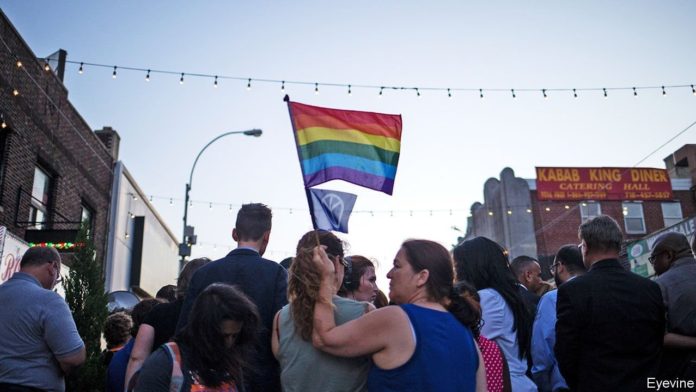
DANIEL SPENCER was a quiet, 32-year-old film editor who had recently moved to Austin, Texas from Los Angeles. He was also gay. In 2015 his neighbour, James Miller, stabbed him to death. The case was harrowing. But a legal quirk uncovered during the trial made it even worse. Mr Miller introduced the “gay-panic” defence in court, arguing that at some point on the night of the murder, Mr Spencer had tried to kiss him. The victim’s apparent homosexuality had made Mr Miller fearful for his safety and thus diminished his responsibility. Despite a lack of physical evidence (and the fact that Mr Miller defended himself by stabbing the victim twice in the back), he was sentenced to just six months in jail, with ten years on probation.
The case was no anomaly. The “gay- panic” defence remains legally admissible in 39 states according to the Movement Advancement Project, a think-tank. It normally bolsters either insanity or self-defence claims, and its use goes back decades. The brutal ‘candlestick murder’ of Jack Dobbins in Charleston in 1958 resulted in a full acquittal of the man who confessed to the crime, based on the fact that the victim had allegedly made unwanted advances. Although attitudes to homosexuality have changed since then, the law in some places has not.
The defence is “the problem hiding under the sofa”, says Jason Marsden, executive director of the Matthew Shepard Foundation, which lobbies against hate crimes. It occurs in so few cases, scattered across multiple jurisdictions, that it seldom attracts much attention.
The American legal system is no stranger to bizarre lines of defence. In 2013 Ethan Couch killed four people while drunk-driving in Texas. His lawyers successfully argued that the 16-year-old was suffering from “affluenza”, having grown up sheltered by wealthy parents who had failed to teach him the consequences of his own actions (he initially avoided prison and was instead put on probation for ten years). Lawyers for Colin Ferguson, a Jamaican immigrant who killed six people on a train in New York in 1993, pursued a “black-rage” defence, claiming that a lifetime of racial prejudice had driven Mr Ferguson insane (they were unsuccessful).
But the track record of the “gay-panic” defence makes it particularly egregious. The FBI keeps no data on the sexuality of homicide victims, and state-by-state records on hate crimes are spotty, so numbers can be difficult to pin down. But Carsten Andresen, a criminal-justice professor at St Edward’s University in Austin, Texas, has been busy compiling a database. His research shows that since the 1970s, gay- and trans-panic defences have reduced murder charges to lesser offences in 40% of the roughly 200 cases that he has identified. In just over 5% of cases, the perpetrator was acquitted or the charges dropped.
It took until 2014 for California to introduce the first ban on the defence (the state’s attorney-general at the time, Kamala Harris, led efforts to push the ban through). Since then, ten more states have followed, most recently Colorado in July of this year. Proposed bans are in committee stages in a handful elsewhere, including Texas and Minnesota, but 30 statehouses remain silent on the issue. And the fact that a third of cases since 1970 have occurred in the past ten years suggests that the problem may be worsening, or at least that “every step forward is followed by several steps back”, says Mr Andresen. For now, nearly two-thirds of gay Americans are living in states where their very existence can be claimed to be a reasonable cause for violence against them. Daniel Spencer probably did not know this when he invited his neighbour over for an evening of wine-drinking and guitar-playing.
This article appeared in the United States section of the print edition under the headline “Panic attacks”







